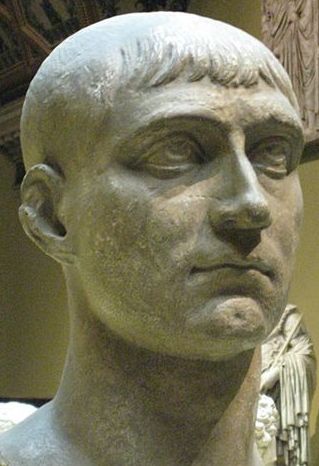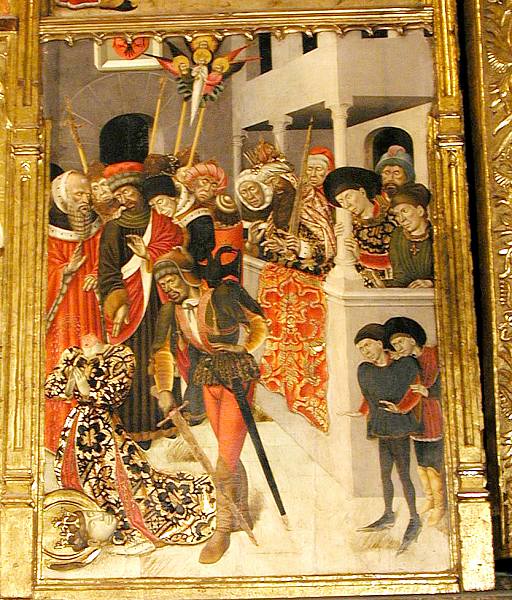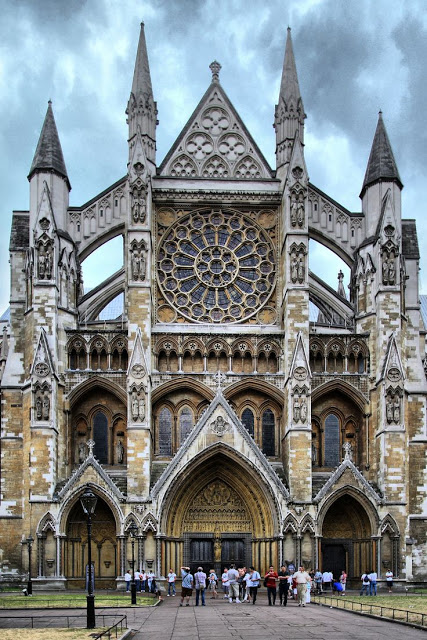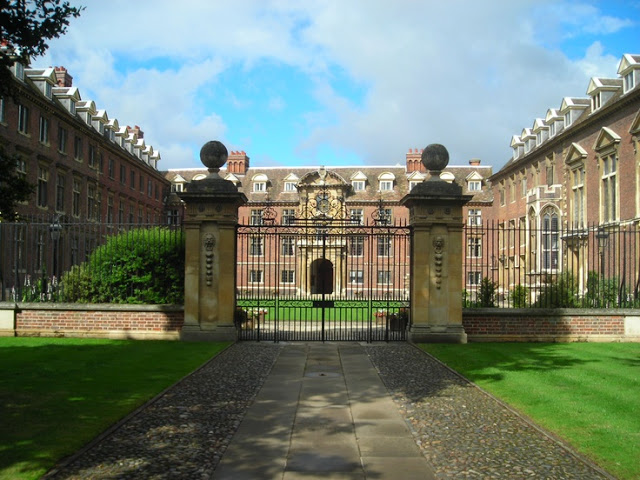Saint Catherine of Alexandria

Self Portrait as Saint Catherine of Alexandria by Artemisia Gentileschi, c.1615-17.
On 25 November, The Greek Orthodox Church celebrates the Feast Day of Saint Catherine of Alexandria, referred to in Greece as;
The Great Martyr Saint Catherine – Ἡ Ἁγία Αἰκατερίνα ἡ Μεγαλομάρτυς
Patron Saint of Philosophers and preachers.
Katerina is the version of the name used in Greece or more officially; Aikaterina.
In The Roman Catholic Church Saint Catherine was regarded as one of the fourteen Holy Helpers a group of Saints worshiped for their acts of praying on behalf of others.
In 1969 The Roman Catholic Church removed her feast Day from the church calendar only to restore it in 2002 as an optional Feast Day.

Saint Catherine Carlo Crivini
Catherine, daughter of Roman Emperor Constus, governor of Alexandria, Egypt ( fourth century), converted to Christianity at around the age of fourteen after experiencing a vision of The Madonna.
Catherine went on to convert hundreds to Christianity before being martyred at the age of eighteen.
A thousand years after her death she was one of the saints Joan of Arc claimed to have seen appear before her.

Saint Catherine of Alexandria Raffael 1507 The National Gallery. London, England.
The Death of Saint Catherine
When Emperor Maxentius began the persecution of Christians, Catherine visited him to admonish him for his cruel acts, Maxentius then called fifty pagan philosophers and preachers to debate with Catherine, hoping they would oppose her pro-Christian arguments.
The plan backfired; not only did they end up agreeing with Catherine many converted to Christianity and were at once put to death!

Roman Emperor Maxentius
Maxentius had Catherine imprisoned and while in captivity many of Catherine’s visitors, over two hundred, Maxentius’ wife Valeria included, converted to Christianity.

Caravaggio – Saint Catherine of Alexandria 1598 (post-restoration image) – Museo Nacional Thyssen-Bornemisza, Madrid.
Maxentius, try as he might, could not get Catherine to renounce her religion; her devotion to Christianity, not even when he had her tied to the wheel; a terrible instrument of torture, and flogged.
This is where the phrase “Catherine wheel” originates from and why Saint Catherine of Alexandria is also referred to as Catherine of the wheel.

The Terrible wheel of torture
Failing to break Catherine through torture, Maxentius then tried to woo her with a proposal of marriage only to have Catherine retort; “Jesus Christ is my husband”.
Maxentius threw in the glove and had Catherine beheaded.

The beheading of Saint Catherine. Icon in Barcelona Cathedral.
Saint Catherine’s Monastery, Mount Sinai

Saint Catherine’s Monastery Sinai
Tradition has it that angels carried Catherine’s corpse to Mount Sinai, where, in the sixth century, Emperor Justinian established what is now know as Saint Catherine’s Monastery in Egypt.
Modern academics think the story of Saint Catherine may be based on the life of Hypatia of Alexandria; a Greek mathematician, astronomer, inventor and philosopher; a pagan, also murdered by Christians – the Parabalani, a Christian mob.

Raphael – Hypatia in The School of Athens, 1509-1511 (detail).
Saint Catherine’s monastery is one of the oldest working monasteries in the world and also contains the oldest working library.
Through the years and with the increase of pilgrimages to the monastery a small town has grown up complete with hotels and swimming pools!
Relics of Saint Catherine
In The Middle Ages Saint Catherine became one of the most important of The Virgin Martyrs.
With the reported discovery of her body (Around 800 AD at Mount Sinai), with her hair still growing and healing oil flowing from her body, shrines dedicated to Saint Catherine began to spring up over Europe.
Rouen Monastery in France claims to house her fingers, alters and shrines honouring Saint Catherine are also to be found in Canterbury Cathedral and Westminster Abbey in England.

Rouen Cathedral. France

Canterbury Cathedral. England

Westminster Abbey. England
A phial of healing oil is housed in Westminster Abbey, London, brought back from Mount Sinai by King Edward the Confessor, King of England
Saint Catherine’s College, Cambridge, founded on Saint Catherine’s day, 25th November 1473, was created for a small group of students to exclusively study theology and philosophy.

Saint Catherine’s College. Cambridge
Devotion to Saint Catherine remains strong; the number of people visiting the Monastery in Sinai is ever increasing.

Ring of St Catherine. Given to pilgrims visiting Mount Sinai.
Visitors to the Monastery in Sinai are presented with a ring, which has been placed on her relics, as an amulet, believed by the faithful to be blessed and so keeps them safe from harm.
Related links:
Saints and Celebrations of the Greek Orthodox Church


-e1676998171809.jpg?resize=380%2C245&ssl=1)
